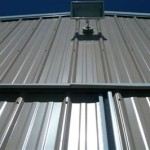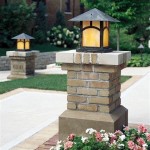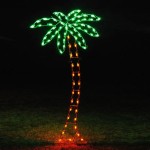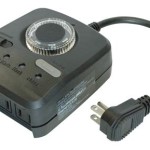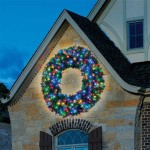How to Operate Outdoor Sensor Lights
Outdoor sensor lights, also known as motion-activated lights, are a valuable addition to any home's exterior. These lights provide security and convenience by illuminating areas automatically when motion is detected. While the basic operation of sensor lights is straightforward, understanding the different settings and features can help you maximize their effectiveness and efficiency.
Understanding the Basics
Outdoor sensor lights typically operate on a simple principle: they detect movement using an infrared sensor, which picks up changes in heat. When motion is detected within the sensor's range, the light turns on. The duration of the light depends on a timer setting, which can typically be adjusted to anywhere from a few seconds to several minutes. After the timer expires, the light turns off automatically.
Most outdoor sensor lights also have a built-in dusk-to-dawn feature. This function allows the lights to automatically illuminate at dusk when darkness falls and turn off at dawn when the sun rises. This feature is particularly useful for security purposes, ensuring consistent illumination throughout the night.
Adjusting Settings for Optimal Performance
To achieve optimal performance, it's essential to properly adjust the various settings on your outdoor sensor light. These adjustments include:
1. Sensitivity
The sensitivity setting controls how sensitive the sensor is to movement. A higher sensitivity setting will pick up even small movements, while a lower sensitivity setting will only activate for larger movements. Adjust the sensitivity based on the desired level of activation. For example, if you want the light to turn on for passing vehicles, you'll need a higher sensitivity setting. Conversely, if you only want the light to activate for people walking by, you can adjust the sensitivity to a lower level.
2. Detection Range
The detection range defines the area that the sensor covers. This range can often be adjusted by physically adjusting the sensor's angle. A wider range is beneficial for illuminating larger areas, while a narrower range can be more precise for specific areas. Consider the size of the area you want to illuminate and adjust the range accordingly.
3. Timer
The timer setting determines how long the light stays on after motion is detected. A shorter timer is ideal for quick bursts of light, while a longer timer provides extended illumination. This setting should be adjusted based on the specific needs of the location. For example, a shorter timer may suffice for a driveway, while a longer timer might be necessary for a walkway or entryway.
4. Light Mode
Some sensor lights offer different light modes, such as full brightness, dim light, or flashing light. The mode you choose will depend on the desired level of security and the specific application. Full brightness provides the most visibility, while a dim light mode offers a more subtle illumination. Flashing light modes can be effective for deterring unwanted visitors.
Troubleshooting Common Issues
While outdoor sensor lights are generally reliable, they can sometimes experience issues. Some common problems and their solutions include:
1. Light Not Turning On
If the light isn't turning on, the first step is to check the power source. Make sure the circuit breaker for the light is turned on and that there is no loose wiring. If the power source is intact, the sensor might be faulty. Try cleaning the sensor lens with a soft cloth to remove any dirt or debris that may be obstructing its functionality.
2. Light Not Detecting Motion
If the light isn't detecting motion, the sensor might be misaligned or positioned poorly. Ensure the sensor is facing the area you want to monitor and that there are no obstacles blocking its view. Additionally, the sensor could be too sensitive or not sensitive enough. Adjust the sensitivity setting accordingly. If the issue persists, the sensor may be malfunctioning.
3. Light Turning On Randomly
If the light turns on randomly or without motion being detected, the sensor might be picking up extraneous signals. This could be due to nearby sources of heat, like a furnace or air conditioner, or from sunlight reflecting off shiny surfaces. Try repositioning the sensor to minimize these influences. Additionally, a high sensitivity setting could be contributing to the issue. Adjusting the sensitivity to a lower level may reduce the unwanted activations.
By understanding the basic operation, settings, and troubleshooting tips for outdoor sensor lights, you can ensure they provide reliable and effective security and convenience for your home.

Motion Sensor Lights Tips To Reset Detector

Outdoor Lamp With Twilight Sensor For Outside Up Down 2700k Luminize

Auraglow Pir Motion Sensor Up Down Outdoor Wall Security Light Warminster Stainless Steel Led Lighting

Auraglow Black Arch Integrated Led Motion Sensor Pir Outdoor Wall Light Adobe Lighting

Best Motion Detector Lights Of 2024 Safewise
The Best Outdoor Motion Sensor Lights To Keep Your Home Secure

Battery Powered Motion Sensor Led Outdoor Lights Set Of 2 64r86 Lamps Plus

7 Best Outdoor Motion Sensor Lights Of 2024 Tested And Reviewed By Bob Vila

Stainless Steel Outdoor Wall Up Down Pir Light Manual Override

With Motion Detector Exterior Lights Lamps Buy Light11 Eu
Related Posts

